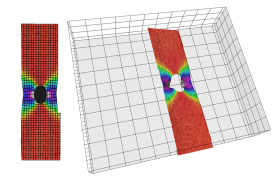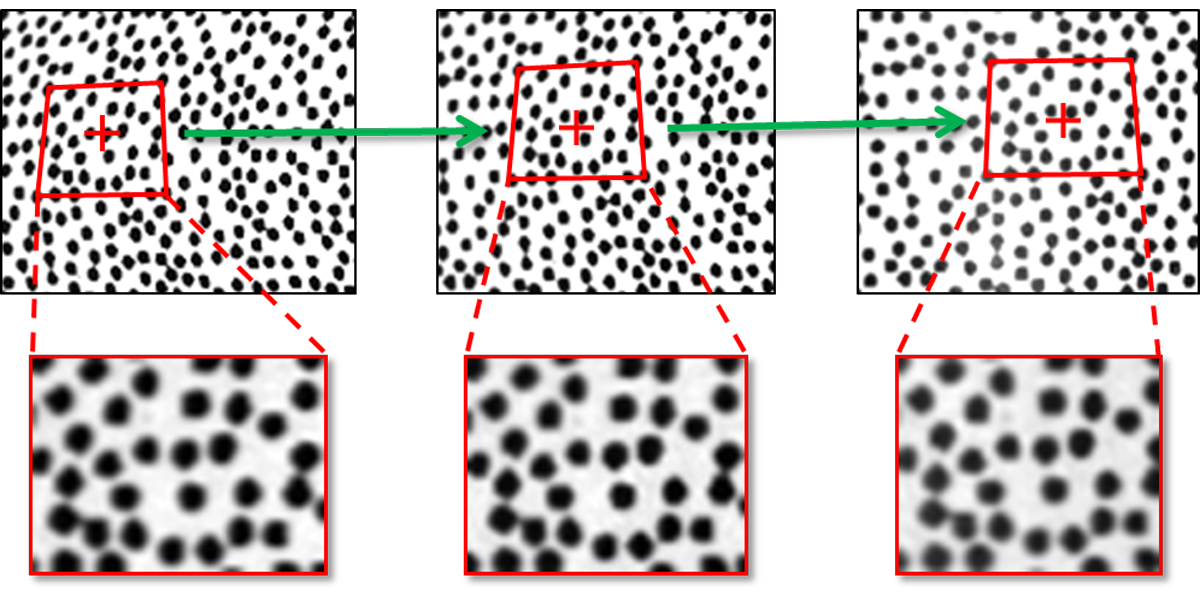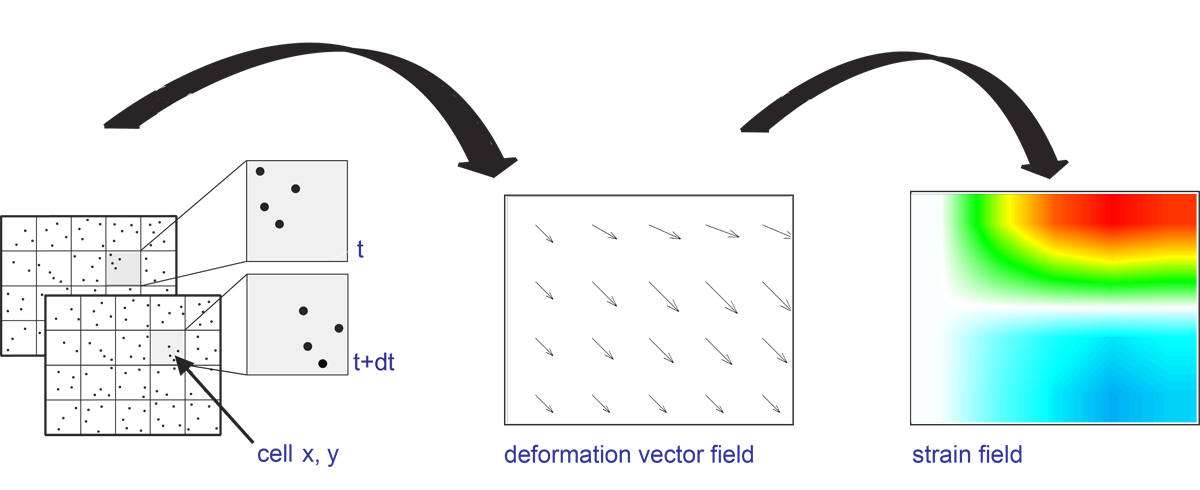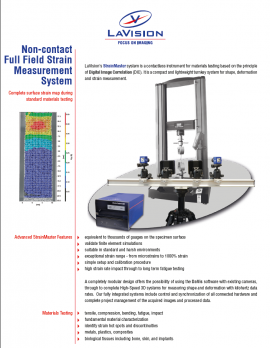
2D-/3D Stereo Digital Image Correlation
Digital image correlation (DIC) tracks the movement of the naturally occurring or applied surface pattern during the test or experiment. This is done by analyzing the displacement of the pattern within subsets of the whole image.


The user acquires a series of images during a material testing experiment, with the first image normally being the case of zero applied load.
The image sequence is analysed by searching for and matching the pattern shift over the entire surface. The difference in pattern is minimised for each subset, and this corresponds to the displacement giving the vector length and direction. With standard single camera or stereoscopic multi camera setups, 2D in-plane deformation or full 3D surface measurements are achieved. Local derivative calculations give the strain tensors across the entire surface.




